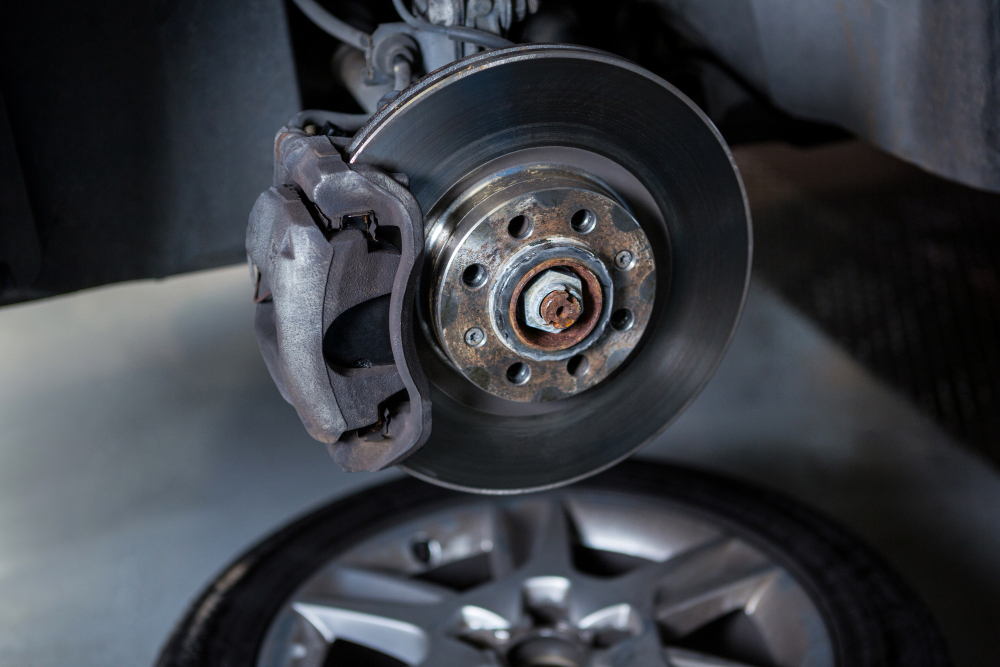Why Your Brake Pads Are Wearing Unevenly

Nothing beats the peace of mind that comes with reliable brakes. But when you notice your brake pads wearing unevenly, that confidence can quickly turn to concern. Uneven brake pad wear isn't just a maintenance headache—it's a safety issue that demands immediate attention.
Understanding what causes this problem can save you money, prevent dangerous situations, and keep your vehicle running smoothly. Whether you're dealing with squealing brakes, vibrating pedals, or simply want to stay ahead of potential issues, recognizing the warning signs and root causes of uneven brake pad wear is essential for every driver.
Let's explore the most common culprits behind this frustrating problem and discover practical solutions to keep your brakes in top condition.
Understanding Normal vs. Uneven Brake Pad Wear
Brake pads naturally wear down over time—that's how they're designed to work. Normal wear appears as gradual, even thinning across the entire surface of the pad. When functioning properly, all brake pads on your vehicle should wear at roughly the same rate.
Uneven wear tells a different story. You might notice one pad significantly thinner than others, diagonal wear patterns, or sections of the pad worn down to the metal while other areas remain thick. These patterns signal underlying mechanical issues that need addressing.
Primary Causes of Uneven Brake Pad Wear
Warped or Damaged Brake Rotors
Brake rotors that have become warped, cracked, or grooved create an uneven surface for your brake pads. This irregularity forces certain areas of the pad to work harder than others, leading to accelerated wear in specific spots.
Heat buildup from aggressive braking, age, or manufacturing defects can cause rotors to warp. When this happens, you'll often feel vibration in the steering wheel or brake pedal during braking, accompanied by uneven pad wear patterns.
Sticking Brake Calipers
Brake calipers house the brake pads and apply pressure to stop your vehicle. When calipers stick or seize, they can't properly release after braking, causing continuous contact between the pad and rotor. This constant friction creates excessive heat and rapid, uneven wear.
Sticking calipers often result from corrosion, damaged seals, or contaminated brake fluid. You might notice your vehicle pulling to one side while braking or excessive heat coming from one wheel after driving.
Contaminated Brake Fluid
Brake fluid absorbs moisture over time, which can lead to corrosion within the brake system. Contaminated fluid reduces the system's efficiency and can cause components to malfunction, including uneven pressure distribution that leads to irregular pad wear.
Most manufacturers recommend changing brake fluid every two to three years, regardless of mileage. Neglecting this maintenance can result in costly repairs beyond just brake pad replacement.
Worn Suspension Components
Your vehicle's suspension system plays a crucial role in maintaining proper brake alignment. Worn ball joints, bushings, or tie rod ends can affect how evenly your brake pads contact the rotors.
When suspension components wear out, they allow excessive movement in the wheel assembly. This movement creates inconsistent contact between brake pads and rotors, resulting in uneven wear patterns and reduced braking performance.
Improper Installation or Low-Quality Parts
Incorrectly installed brake pads or the use of inferior aftermarket parts can lead to premature, uneven wear. Brake pads must be properly seated and aligned within the caliper to function correctly.
Using brake pads with incorrect specifications for your vehicle, or mixing different types of pads on the same axle, can create uneven braking forces and irregular wear patterns.
Warning Signs to Watch For
Recognizing the early signs of uneven brake pad wear can prevent more serious problems:
Squealing or grinding noises during braking often indicate worn pads, but uneven wear can cause these sounds to occur inconsistently or from only one side of the vehicle.
Vehicle pulling to one side while braking suggests uneven brake force, often caused by sticking calipers or significantly different pad thicknesses between sides.
Vibrating brake pedal or steering wheel typically indicates warped rotors, which contribute to uneven pad wear over time.
Visible thickness differences between brake pads, observable through wheel spokes, clearly indicate uneven wear requiring immediate attention.
Prevention Strategies
Regular Brake Inspections
Having your brakes inspected every 6,000 to 10,000 miles helps catch uneven wear early. Professional technicians can identify developing problems before they become costly repairs.
Gentle Braking Habits
Aggressive braking generates excessive heat, contributing to rotor warping and accelerated pad wear. Gradual, smooth braking extends component life and promotes even wear patterns.
Quality Parts and Professional Installation
Investing in quality brake components and professional installation ensures proper fit and function. While premium parts cost more upfront, they typically last longer and perform more reliably.
Brake Fluid Maintenance
Regular brake fluid changes prevent contamination-related issues that can cause uneven wear. Follow your vehicle manufacturer's recommended service intervals for optimal brake system health.
When to Seek Professional Help
While some car enthusiasts tackle brake maintenance themselves, uneven brake pad wear often indicates complex underlying issues requiring professional diagnosis. Attempting DIY repairs without proper knowledge and tools can compromise your safety and create more expensive problems.
Professional mobile auto repair services offer the convenience of expert brake service at your location. This approach saves time and ensures proper diagnosis of brake system problems without the hassle of driving on potentially compromised brakes.
Get Your Brakes Back on Track
Uneven brake pad wear signals problems that extend beyond simple pad replacement. Addressing these issues promptly protects your safety, saves money, and maintains your vehicle's reliability.
Regular maintenance, quality parts, and professional service form the foundation of a healthy brake system. When you notice signs of uneven wear, don't wait—early intervention prevents minor issues from becoming major safety hazards.
If you need professional mobile auto repair in Central Florida, contact Johnny On The Go today to book a service. Our experienced technicians bring expert brake service directly to your location, ensuring your vehicle's safety and your peace of mind.